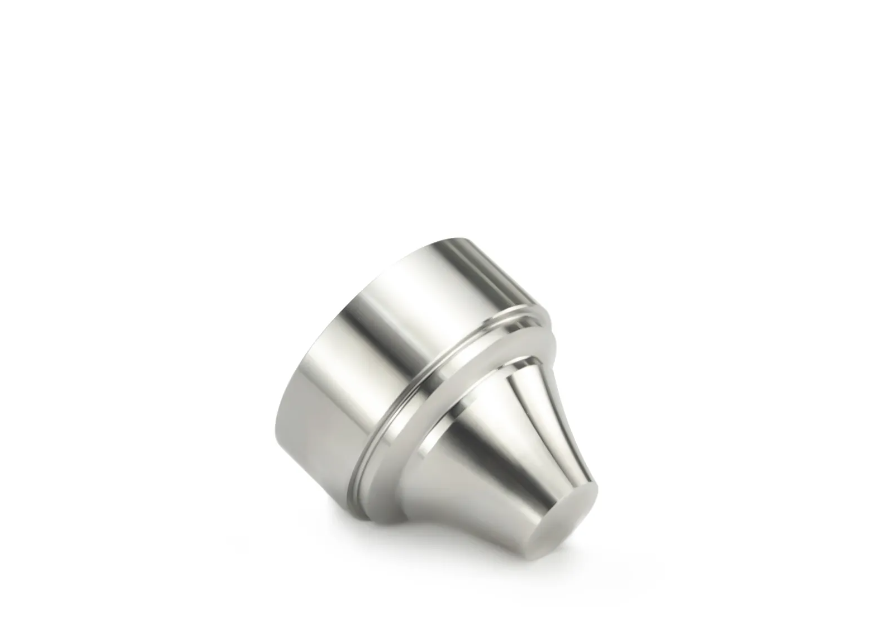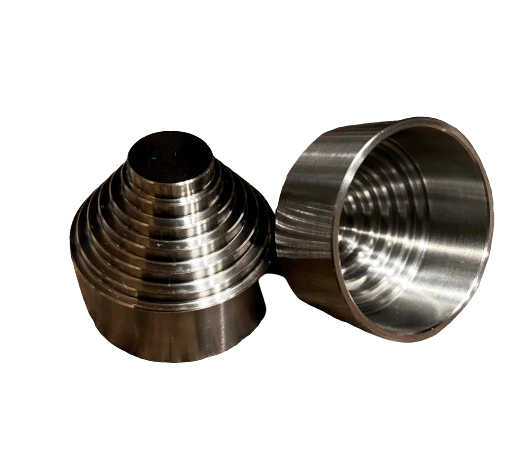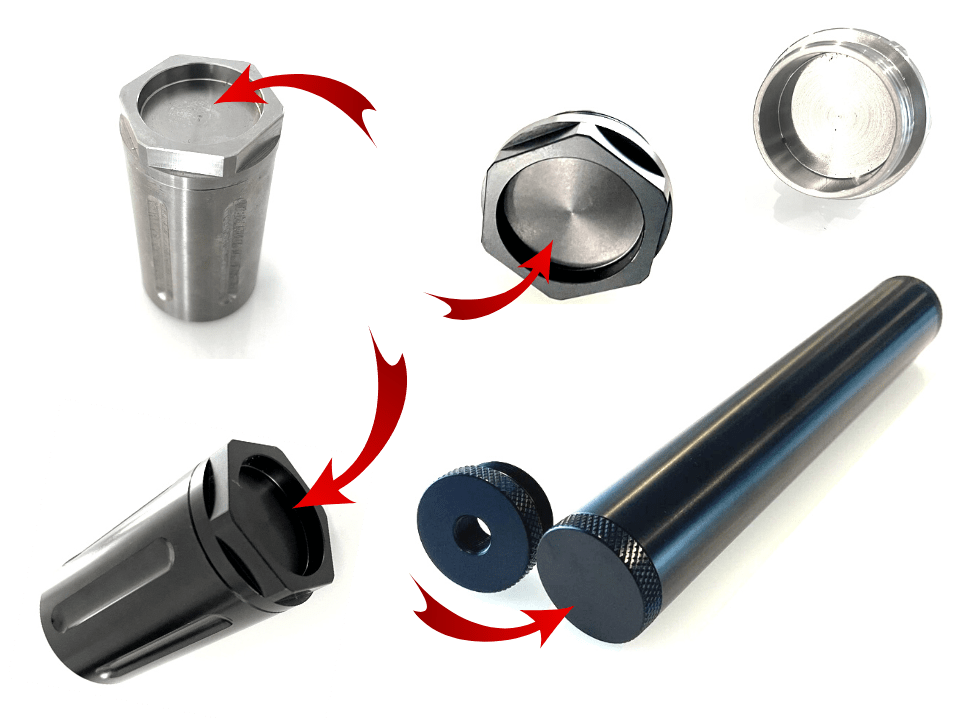Solvent trap cups are components typically used in firearm accessories known as solvent traps. These traps are designed to capture and contain cleaning solvents and debris while cleaning a firearm, preventing them from entering the environment or creating a mess. The cups within a solvent trap serve specific functions and work in a sequential manner to facilitate the cleaning process.
Solvent trap cups are usually made of durable materials such as aluminum or stainless steel and are designed with various internal structures. The cups feature holes, dividers, and baffles that help filter and separate the solvent from debris, allowing for efficient cleaning.
Table of Contents
overview of how solvent trap cups work:
- Initial Capture: The first cup in the solvent trap assembly captures the solvent and debris that flow from the firearm during cleaning. It acts as the primary containment unit, collecting the majority of the residue and preventing it from reaching subsequent cups.
- Filtration: As the solvent flows through the solvent trap cups, any solid particles and debris are trapped and filtered out. The internal structures of the cups, such as holes and dividers, help to separate the solvent from contaminants effectively.
- Separation: The cups with internal baffles aid in the separation of the solvent from the debris. Baffles create a tortuous path for the solvent, causing it to change direction and slow down. This allows any remaining particles to settle at the bottom of the cups, while the cleaner solvent rises to the next cup.
- Progressive Cleaning: The solvent trap cups are arranged in sequential order, with each cup acting as a stage in the cleaning process. As the solvent progresses through the cups, it undergoes further filtration and separation, ensuring a cleaner solvent for subsequent stages.
- Final Capture: The last cup in the solvent trap assembly serves as the final containment unit. It captures any remaining debris or contaminants that may have bypassed the earlier cups, preventing them from exiting the trap.
6 Solvent Trap Cups and How They Are Different
STRAIGHT CONE (60- OR 50-DEGREE ANGLE)


The straight cone is most effective in centerfire rifles shooting high-velocity supersonic ammunition, with speeds approaching 2,500 to 3,000 feet per second. These are used most often for calibers like 5.56 NATO, .308 Winchester, .300 Win Mag, and similar supersonic .22 and .30-caliber cartridges. Straight cones are most often sold in 50- and 60-degree variants. A general consensus among experienced suppressor builders says 60-degree cones work best for higher velocities, while 50-degree cones work better for intermediate velocities above 1,125 feet per second but below 2,500 feet per second.
RADIAL CONE


Radial cones are effective “hybrids” most often used for both centerfire rifle rounds and subsonic pistol or carbine rounds. Many commercial suppressor manufacturers use baffles with a similar radial or curved design. These are most often used on guns that can fire both supersonic and subsonic ammo and are favored for 300 Blackout and 9mm Parabellum cartridges.
STEPPED CONE


Stepped cones are often called “Aztec” cones for their unique stepped shape. These cones
have been reported to produce lower pitches and overall tones when used to suppress either subsonic or slower supersonic cartridges. The builders’ theory is that the cone’s stepped design works to induce greater turbulence in the gas flow. Other feedback says high-velocity cartridges do not benefit so much from this design, while slower cartridges can see a small increase in performance. Stepped cones are often similar in their overall length and angle to straight cones, providing a 50- to 60-degree slope.
K-CUPS


K-cups or K-baffles represent an older design. They stack directly atop each other and provide excellent performance for handguns, pistol cartridges, and exclusively subsonic rounds. If you’re building a setup meant for a 9mm handgun, .22 LR, or 300 Blackout shooting only subsonic loads, the K-cup stack is a top choice. These internals can also be the most difficult to machine since they require additional machining beyond simply drilling pass-through holes and basic clips, so they may not be favored for first-time builders or those without a milling machine or lathe.
FREEZE PLUG-STYLE CUPS


These “freeze plug”-type cups are the most affordable, arguably the simplest, they’re highly stackable, and they’re versatile. They’re the “OGS” of the form 1 suppressor world and were used long before manufacturers began producing newer styles like the options listed above. They can generally be drilled for any caliber up to .308 Winchester and provide mild to good performance for a wide variety of supersonic and subsonic loads. Their performance will be poorer compared to a by-design conical or radial setup. Before different options became available commercially, the freeze plug was the top choice for most Form 1 suppressor builders.
SKIRTED CUPS


You can find many of the cones listed above with a skirt, or pre-fabricated spacer machined directly into the cone itself. This eliminates the need to buy your own spacers or cut them from raw tubing. There are various other types of internals made for form 1 builds, though the options listed above are the most popular and comprise a majority of configurations for most calibers, including both centerfire and rimfire rifles and pistols.

